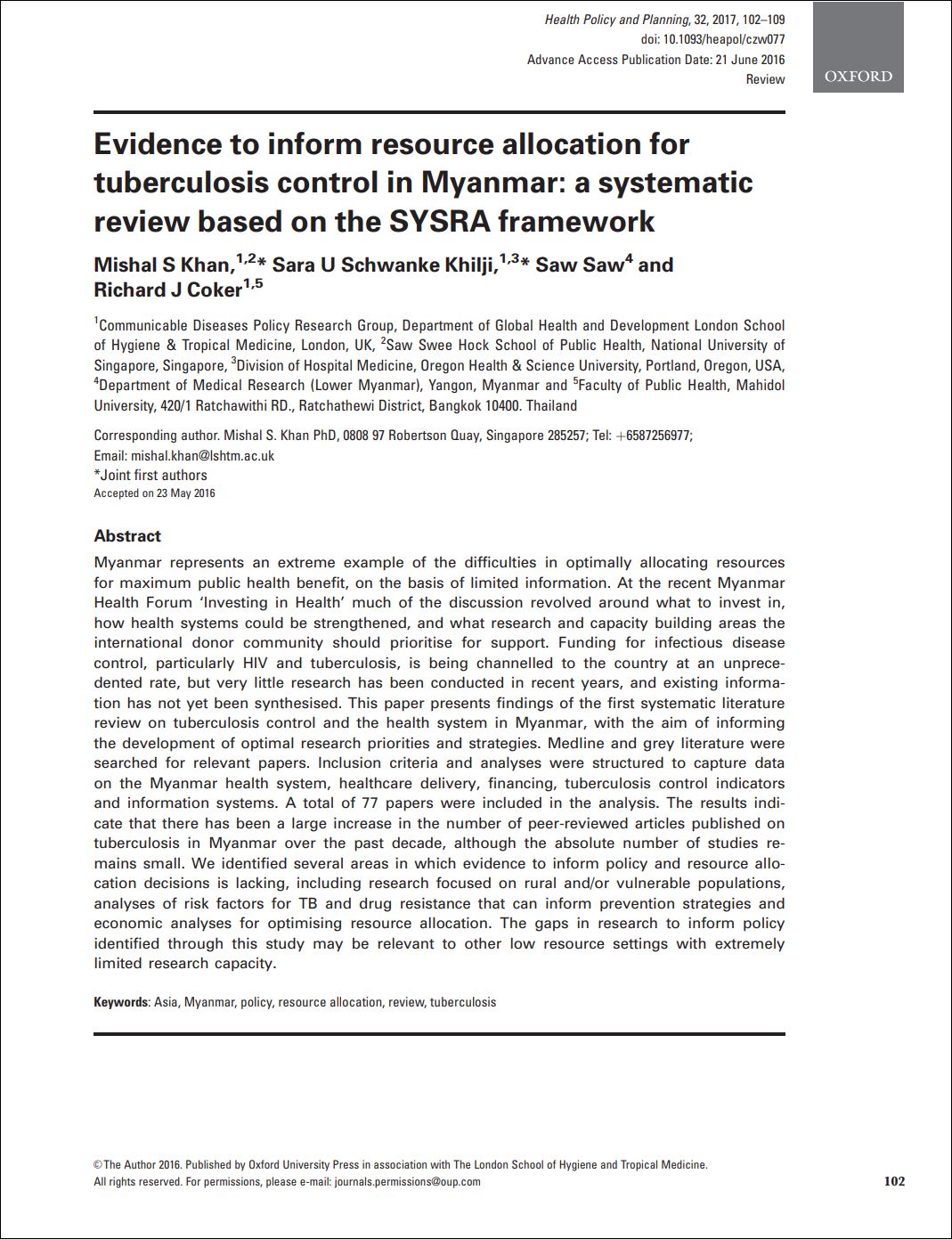Evidence to inform resource allocation for tuberculosis control in Myanmar: a systematic review based on the SYSRA framework

Citation: Mishal S Khan, Sara U Schwanke Khilji, Saw Saw, Richard J Coker, Evidence to inform resource allocation for tuberculosis control in Myanmar: a systematic review based on the SYSRA framework, Health Policy and Planning, Volume 32, Issue 1, February 2017, Pages 102–109, https://doi.org/10.1093/heapol/czw077
Abstract: Myanmar represents an extreme example of the difficulties in optimally allocating resources for maximum public health benefit, on the basis of limited information. At the recent Myanmar Health Forum ‘Investing in Health’ much of the discussion revolved around what to invest in, how health systems could be strengthened, and what research and capacity building areas the international donor community should prioritise for support. Funding for infectious disease control, particularly HIV and tuberculosis, is being channelled to the country at an unprecedented rate, but very little research has been conducted in recent years, and existing information has not yet been synthesised. This paper presents findings of the first systematic literature review on tuberculosis control and the health system in Myanmar, with the aim of informing the development of optimal research priorities and strategies. Medline and grey literature were searched for relevant papers. Inclusion criteria and analyses were structured to capture data on the Myanmar health system, healthcare delivery, financing, tuberculosis control indicators and information systems. A total of 77 papers were included in the analysis. The results indicate that there has been a large increase in the number of peer-reviewed articles published on tuberculosis in Myanmar over the past decade, although the absolute number of studies remains small. We identified several areas in which evidence to inform policy and resource allocation decisions is lacking, including research focused on rural and/or vulnerable populations, analyses of risk factors for TB and drug resistance that can inform prevention strategies and economic analyses for optimising resource allocation. The gaps in research to inform policy identified through this study may be relevant to other low resource settings with extremely limited research capacity.
Author(s): Health Policy and Planning
Year: 2017
Language: English
Region(s): BURMA
Resource Type: Journal Articles
Source: Other
